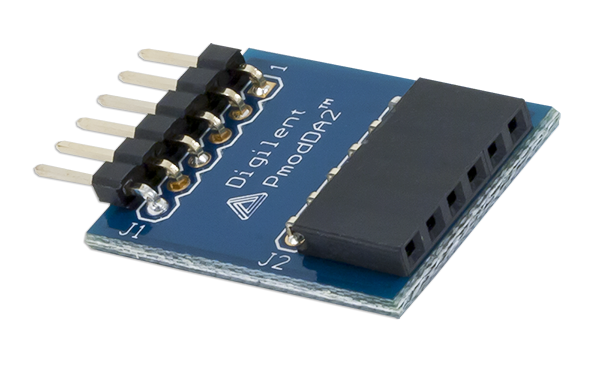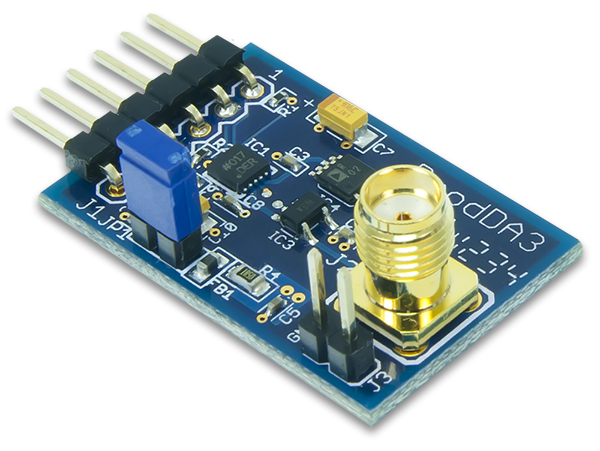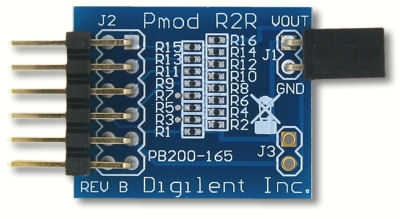Welcome back to the Digilent Blog!
As we continue on with our Pmod series, we will highlight some of the different types of Pmods that Digilent offers. Previously, we had the chance to take a look at the LS1, which is a great Pmod to use with line-following robots such as Susan. Today, we’ll take a look at five of the digital-to-analog converter (DAC) Pmods. Four of them are conveniently named DA1, DA2, DA3, and DA4, and the last one is a R-2R circuit.
But before we get into the Pmods themselves, let’s ask (and answer) a more important question: why do we care about or want these Pmods in the first place?
DACs, not surprisingly, convert a digital signal into an analog signal, such as a voltage. This voltage can then be used to drive an audio amplifier, which can in turn drive a speaker. In fact, virtually all electronic components today that produce sound use a DAC, from CDs to MP3 players to the giant speakers that are used in concerts. In the past, DACs were commonly used to send analog signals to a video display, but they and their VGA ports have been slowly phasing out in favor of DVI and HDMI connectors, which use purely digital signals to communicate with the monitor. The reason for this is that digital signals do not lose any quality, where analog signals (after being converted from digital signals) lose some of their quality and generally cannot support as high of a display resolution as digital signals.

Do not think that this means DAC and analog signals are entirely obsolete for video displays, though. There are still a few computers that have VGA connections to send analog signals, as well as a few monitors that have integrated RAMDACs (digital-to-analog converters with a small amount of RAM available to them), but even those are being phased out in favor of using transition-minimized differential signaling (TMDS).
There are a variety of applications such as audio, motors, and other components that require a voltage signal in order to be able to operate. However, each component needs a different level of precision (or resolution) to work ideally. On the digital side, this precision is given in the number of bits that are able to be converted by the DAC. This is because the voltage level that is output by the DAC is limited between logic high and logic low voltage levels given by the digital signals. So, the more bits we are able to convert, the more “steps” or increments that we are able to divide our analog output into.
So where do Digilent’s Pmods fit into all of this? Digilent has several different Pmods that offer generic DACs that are not limited to specific applications such as audio (although sound is a very useful thing to have).
The DA1 is able to take two different 8-bit digital inputs and give two separate outputs for each input, giving a total of four analog outputs.

Pmod DA2 can receive two 12-bit signals and convert each one into their own analog output, whereas the DA3 only has one 16-bit input, but this input offers a high-resolution analog output through an SMA connector.


The DA4 is one of the most versatile DACs that Digilent offers; although it only has one input, there are eight 12-bit analog outputs that can either be addressed individually or simultaneously, allowing you to drive multiple components off of a single DAC!

For educational purposes, there is also an R2R Pmod to help show people new to electrical engineering and similar fields how the early DACs worked at a fundamental level.

But perhaps you need DACs that are a little more precisely designed, like audio amplifier DACs. Then Digilent has the Pmod for you! Keep checking back in to the Digilent Blog to find out!

One Comment on “Digilent Pmods – Digital-to-Analog Converters”